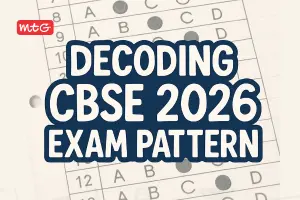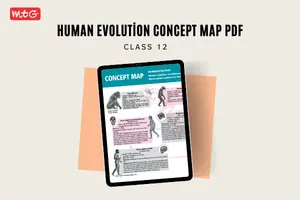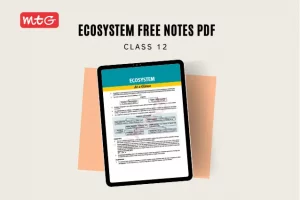Biotechnology: Principles and Processes Class 12 Biology MCQ with Answers has been organized according to the latest exam pattern in the CBSE Class 12 Biology syllabus for the upcoming CBSE Class 12 Biology Exam. Biotechnology: Principles and Processes covers topics like principles and tools of biotechnology, processes of recombinant DNA technology, These questions are designed to help students understand the concept thoroughly. They are helpful for revision and for grasping the concepts effectively. These MCQ questions cover in-text book questions and important topics to help students assess their preparation level for CBSE board exams.
Recent – Microbes in Human Welfare Class 12 Biology MCQ With Solutions
CBSE Class 12 Chapter 9 Biotechnology: Principles and Processes MCQs
Check below the CBSE Class 12 Biology MCQ with answers and Clear your idea of Chapter 9 Biotechnology: Principles and Processes.
Q.1. Which of the following is correct regarding elution?
(a) It is making the DNA bands visible under UV radiation.
(b) It is cutting and extraction of DNA bands from the agarose gel.
(c) It is isolation of foreign DNA from the desired organism.
(d) It is separation of DNA fragments on agarose gel.
Answer
Check Out – 11 Most Important Graphics of NCERT Class 12th Biology That You Cannot Miss
Q.2. Select the correct statement regarding gel electrophoresis.
(a) DNA is positively charged molecule and moves towards the cathode.
(b) DNA is negatively charged molecule and moves towards the anode.
(c) DNA is positively charged molecule and moves towards the anode.
(d) DNA is negatively charged molecule and moves towards the cathode.
Answer
Practice More – CBSE Sample Paper Class 12 for 2023-24 Boards | FREE PDF from MTG
Q.3. DNA strands on a gel stained with ethidium bromide when viewed under UV radiation, appear as
(a) bright blue bands
(b) yellow bands
(c) bright orange bands
(d) dark red bands.
Answer
(c): In the process of gel electrophoresis, the separated DNA fragments can be seen after staining the DNA with a compound like ethidium bromide (EtBr) followed by exposure to UV radiation as bright orange coloured bands
Q.4. Which of the following groups of enzymes produces sticky ends?
(a) AluI, BamHI, EcoRI
(b) HindII, EcoRII, SalI
(c) ScaI, HindIII, HindII
(d) BamHI, EcoRI, HindIII
Answer
Q.5. Which of the following is incorrect regarding plasmid DNA?
(a) It is always double stranded.
(b) It is circular.
(c) It is coated with histone proteins.
(d) It does not carry any vital gene necessary for cell.
Answer
Q.6. ampR or ampicillin resistance gene in a pBR322 usually helps in the selection of
(a) component cells
(b) transformed cells
(c) Origin of replication site in plasmid
(d) Palindromic sequence in DNA.
Answer
Q.7. Which of the following is not the source of restriction endonuclease?
(a) Streptomyces albus
(b) Haemophilus aegyptius
(c) Escherichia coli
(d) Agrobacterium tumefaciens
Answer
Q.8. Identify the wrong statement with regard to restriction enzymes.
(a) Each restriction enzyme functions by inspecting the length of a DNA sequence.
(b) They cut the strand of DNA at palindromic sites.
(c) They are useful in genetic engineering.
(d) Sticky ends can be joined by using DNA ligases.
Answer
Q.9. Which of the following is not a cloning vector?
(a) pBR322
(b) Cosmid
(c) Yeast artificial chromosome
(d) HindII
Answer
Q.10. Select the correct statement regarding alkaline phosphatase.
(a) It is an enzyme that removes the phosphate group from the 5′ end of double stranded DNA.
(b) It is an enzyme that adds the phosphate group in the 5′ end of double stranded DNA.
(c) It is an enzyme that adds the phosphate group in the 3′ end of the double stranded DNA.
(d) It is an enzyme that removes the phosphate group from the 3′ end of double stranded DNA.
Answer
We hope the MCQs for the CBSE Class 12 Biology Chapter 9 on Biotechnology : Principles and Processes are helpful for your board exam preparation.
Keep learning and stay updated with us for more CBSE exam updates.






























